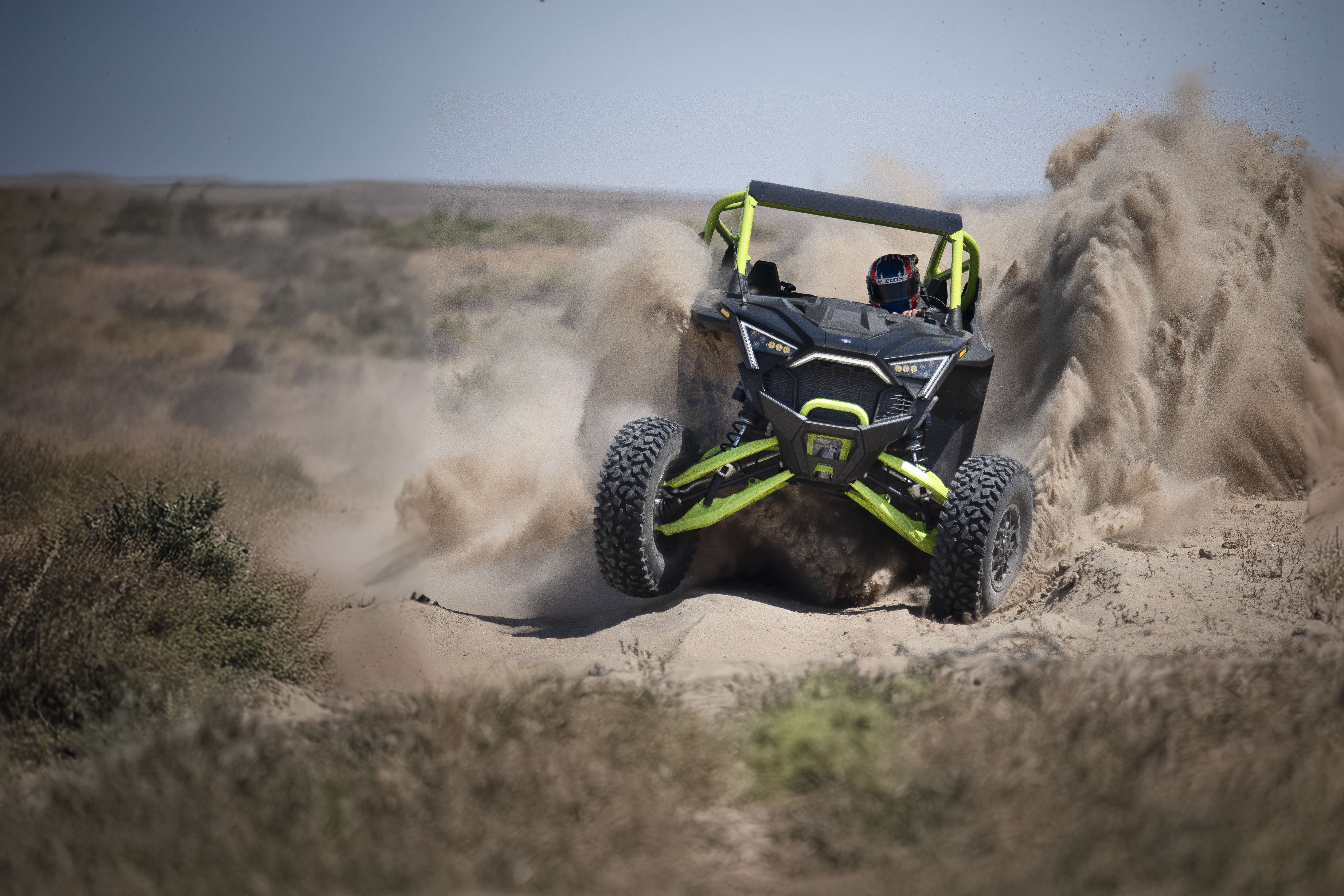SCORE Latest News
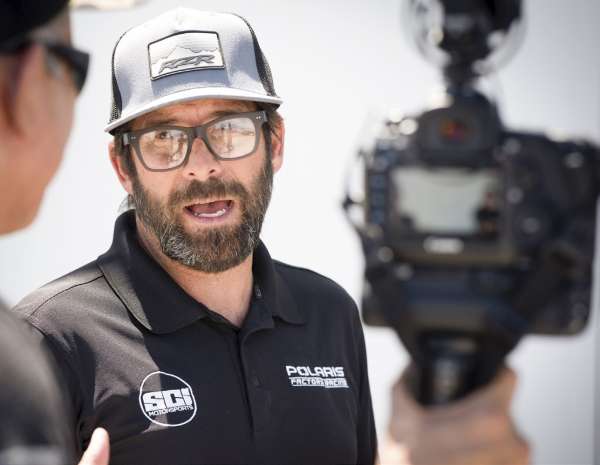
SCI MOTORSPORTS GENERAL MANAGER, RYAN THOMAS GIVES A RUNDOWN ON THE RZR PRO R’S FACTORY COMPONENTS THAT MAKE UP THE RACE VEHICLES
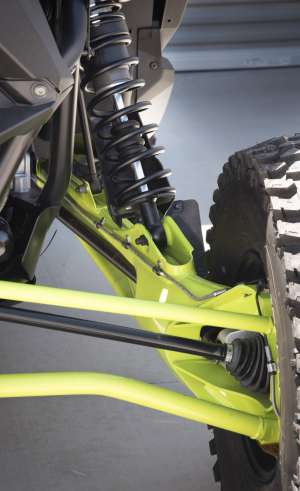
COMPONENTS LIKE THE RZR PRO R’S CV JOINTS ARE OE FACTORY PARTS, WHICH AMAZES THE TEAM BECAUSE OF THEIR DURABILITY
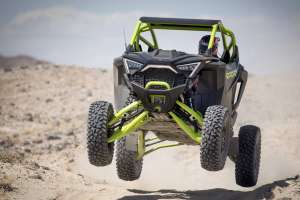
DURING OUR TEST WITH SCI MOTORSPORTS DRIVER MAX EDDY IN A FACTORY RZR PRO R TWO-SEATER, THE CV JOINT ANGLES CAN REACH 38-40 DEGREES AT FULL DROOP WITHOUT ANY WEAR ISSUES
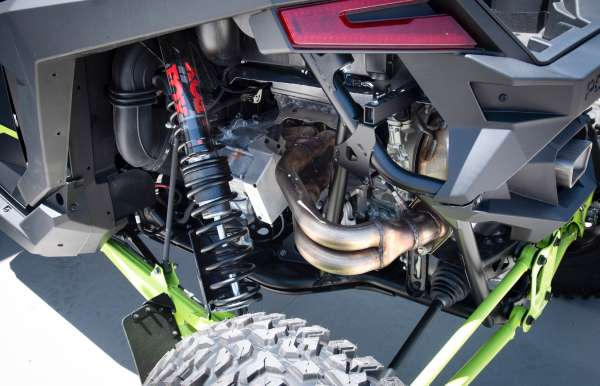
Full Race or Stock?
Uncovering the Facts On Polaris Factory Racing's RZR PRO R Components
BY DAN SANCHEZ
BY DAN SANCHEZ
The speed and performance of UTV race vehicles competing in SCORE have increased so dramatically, that one can argue they are possibly the fourth fastest type of four-wheel vehicle in Baja racing. While the technology continues to advance, many fans and enthusiasts find it hard to believe the components on these race vehicles are the same as those you can purchase from your local UTV dealer’s showroom floor.
The truth is that other than safety equipment, such as a fuel cell, racing seats, comms, and a SCORE-approved roll cage, close to 75 percent of the race vehicle is made up of factory components. Many don’t believe this is possible, especially after witnessing the impressive wins and vehicle reliability the latest UTVs are capable of. According to UTV race teams and those backed by the manufacturers, the improvements of original equipment components directly result from what manufacturers have learned from their involvement and experience in Baja racing.
THE POLARIS FACTORY RACING TEAM
The prime example of UTV component innovation is the impressive victories and increasing speeds by Polaris racers and their vehicles. Polaris has been involved in SCORE Baja racing since 2012 and the company became the Official UTV of SCORE International in 2018. Within that time, the company has invested heavily in research and development, working with many teams, and most recently, developed its Official Factory Racing effort with SCI Motorsports in 2023.
SCI Motorsports General Manager, Ryan Thomas, has been involved in off-road racing for most of his adult life. He is a five-time SCORE Baja 1000 winner and former President of Ultra4 Racing. Throughout his career, he’s witnessed the progression Polaris vehicles have made in the sport. Even so, he’s still amazed at what these vehicles can do, what they are capable of, and how they are single handedly changing the face of off-road motorsports in the modern age.
“I’ve been involved with off-road motorsports for over 30 years, and I was a little skeptical at the beginning of the season last year knowing that we were going to be racing a mostly stock Polaris Pro R,” says Thomas. SCI Motorsports Crew Chief Johnny Nelson, (multiple SCORE Baja 500 and 1000 winner and SCORE Mechanic OTY) had similar concerns.
“Johnny and I were skeptical of production components and as we began working with the Polaris team, we were worried about the drive axles and CV joints. These newer Polaris race vehicle’s CV joints see 38 to 40 degrees of articulation when in full-droop, and during my days of racing Class 1600, Class 10 and Class 1 cars, you never wanted CV joint angles extended anywhere beyond 23 to 28 degrees!
“The technology in these vehicles is impressive. To put it into perspective, in 1996, I won the Baja 1000 in a Class 1 car with a type-four VW, 2.9-liter four-cylinder motor that made less horsepower than our Factory Polaris Race cars do today. Back then we were always worried about CV joints and dive axles. And so early on, with these Polaris vehicles, I was pushing to upgrade them from stock.
“Now, a year and a half later, of all the things that Johnny and I were worried about, there was no need to be concerned in 90 percent of all the cases. That is a testament to the development progress the UTV manufacturers have made over the last decade. To be fair, they did have the luxury of three to four decades of our industry’s pioneers using trial and error to learn what works and what doesn’t, so the OEM’s weren’t starting from ground zero. But they applied their science and engineering expertise to elevate factory components to withstand all the punishment the brutal Baja Peninsula can throw at a vehicle and I believe this is a large part of why we have seen the growth in the UTV classes over the last five or six years. In short they have become incredibly durable and reliable”
The development of the factory components within the Polaris race vehicles proved themselves during SCI’s first season in SCORE last year. The team racing in the Gen 1 Polaris RZR Pro R’s ran away with the 2023 SCORE Pro UTV Open Class championship, and four first-place finishes in each race. At the start of the 2024 season, the team amassed two Overall UTV class finishes in the SCORE San Felipe 250 and SCORE Baja 500.
SO WHAT’S STOCK AND NOT?
The entire SCI Motorsports team from Thomas and Nelson, to the prep mechanics, and even its drivers; Brock Heger, Cayden MacCachren, Max Eddy, and Craig Scanlon, are amazed at how many components on these vehicles are original equipment.
“I have to say, the cars we race are so similar to the stock RZR Pro R anyone can purchase from a showroom, that it’s a lot easier to point out the few things that are actually different,” says Thomas. “ The most notable difference is the chassis. And there’s a reason for that. The Polaris Factory Race chassis was designed from the ground up as a race car. This enabled Polaris engineers to dismiss the need to appeal to the average consumer and opened up opportunities to maximize weight savings and increase strength in the design of the chassis.
“We use a lighter carbon fiber driveshaft which is not stock, but the U-joints are factory units. We also use an Alcon brake package developed specifically for the Factory Pro R that is more suited for the extreme conditions present in a racing environment.
“In the suspension, we use high performance rear toe links and front upper control arms that are a bit more robust and utilize Uniballs at the pivot points to enable adjustments to camber, caster, and toe, based on driver’s preference.”
Thomas went on to list components that are not modified and are original equipment on Polaris RZR Pro R models. “These include the drive axles, front and rear CV joints, front and rear differential, front and rear knuckles, lower front control arms, rear trailing arms, transmission, and engine are all stock.”
Another one of the components that are original equipment in these race vehicles, but in which the performance has surprised the SCI team was the clutch belt. “Originally the belt was a concern to many of us at SCI,” said Thomas. “Early on our drivers practiced belt changes to be prepared to do it quickly in the field. However, the team has yet to experience a belt failure during a race or testing.”
COMPUTER TUNING AND BEYOND
One of the most important and significant differences between the race vehicles and those available to consumers is not so much in the physical components but in the electronic tuning. “There are a lot of electronics in these cars,” said Thomas. “The OEM shocks, for example, are electronically controlled and have an algorithm written for the cars as they come out of the factory targeting the average consumer. The Dynamix algorithm we use for racing is one we’re continually developing with Polaris and is tailored specifically to give race drivers the most options in different race scenarios. Additionally, we modify electronics involved with steering and throttle modulation.”
While the fine-tuning and ability for adjustments are what make a vehicle like the Polaris Factory RZR Pro R go from a consumer fun vehicle to a full-race one, it would seem that everything has been done to maximize the platform. According to Thomas and the rest of the SCI team, that is far from the truth. “Everything in motorsports is a compromise,” says Thomas. “So what we are doing to further improve these vehicles includes narrowing those compromises via the computer keyboard.”
The Polaris Factory RZR Pro Rs continue to impress Thomas and the entire SCI Motorsports team. The success within the past year and a half racing in SCORE, has clearly validated the platform and is part of an overarching plan that will see Polaris offering a race-ready vehicle anyone can purchase soon. “I don’t have any dates yet, but soon, you’ll be able to buy a Factory Polaris RZR Pro R race car,” says Thomas. “They will be limited production-run vehicles, but you will be able to buy it off the showroom floor and drive it to the starting line.”

